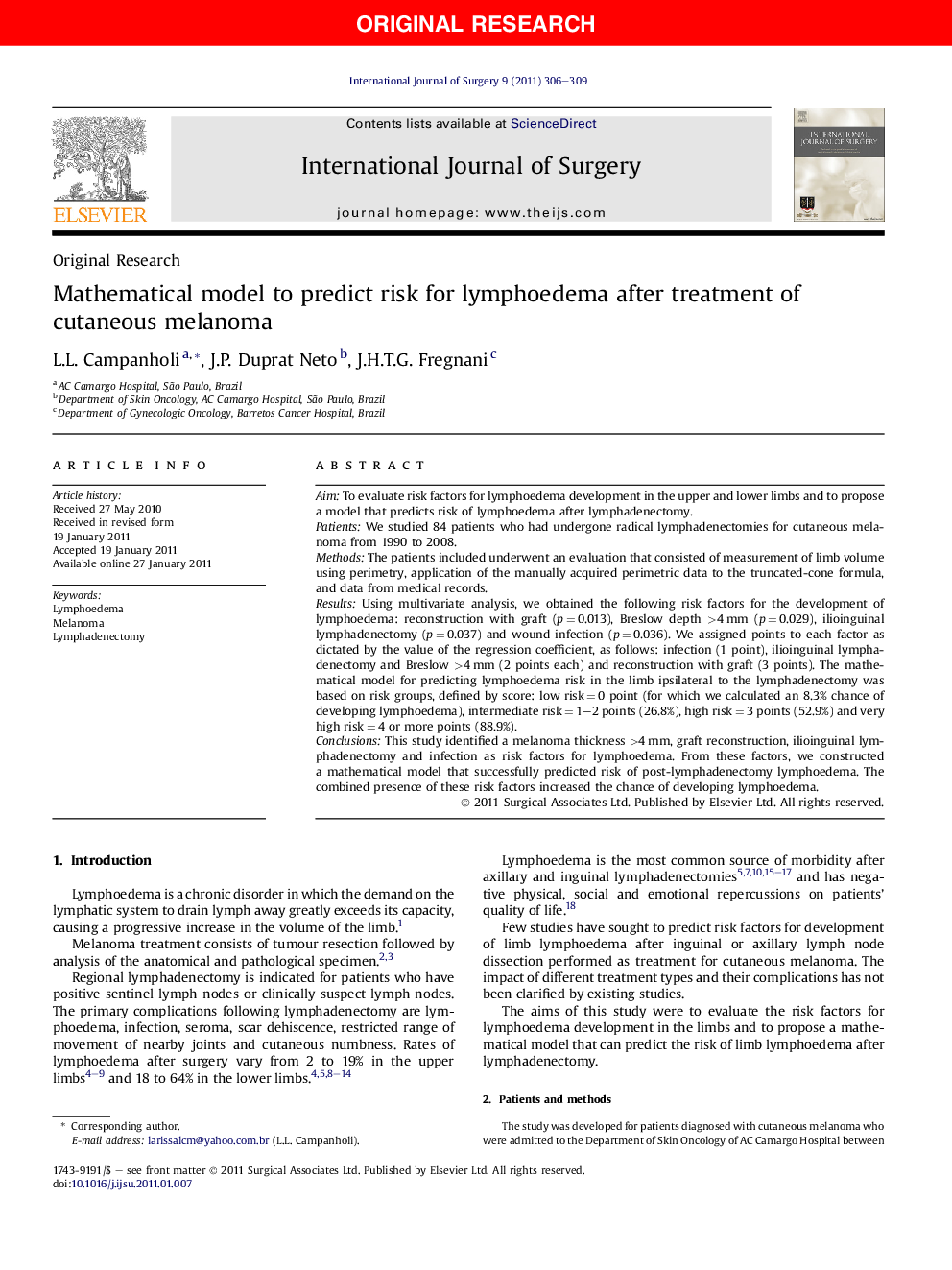| Article ID | Journal | Published Year | Pages | File Type |
|---|---|---|---|---|
| 4287292 | International Journal of Surgery | 2011 | 4 Pages |
AimTo evaluate risk factors for lymphoedema development in the upper and lower limbs and to propose a model that predicts risk of lymphoedema after lymphadenectomy.PatientsWe studied 84 patients who had undergone radical lymphadenectomies for cutaneous melanoma from 1990 to 2008.MethodsThe patients included underwent an evaluation that consisted of measurement of limb volume using perimetry, application of the manually acquired perimetric data to the truncated-cone formula, and data from medical records.ResultsUsing multivariate analysis, we obtained the following risk factors for the development of lymphoedema: reconstruction with graft (p = 0.013), Breslow depth >4 mm (p = 0.029), ilioinguinal lymphadenectomy (p = 0.037) and wound infection (p = 0.036). We assigned points to each factor as dictated by the value of the regression coefficient, as follows: infection (1 point), ilioinguinal lymphadenectomy and Breslow >4 mm (2 points each) and reconstruction with graft (3 points). The mathematical model for predicting lymphoedema risk in the limb ipsilateral to the lymphadenectomy was based on risk groups, defined by score: low risk = 0 point (for which we calculated an 8.3% chance of developing lymphoedema), intermediate risk = 1–2 points (26.8%), high risk = 3 points (52.9%) and very high risk = 4 or more points (88.9%).ConclusionsThis study identified a melanoma thickness >4 mm, graft reconstruction, ilioinguinal lymphadenectomy and infection as risk factors for lymphoedema. From these factors, we constructed a mathematical model that successfully predicted risk of post-lymphadenectomy lymphoedema. The combined presence of these risk factors increased the chance of developing lymphoedema.
